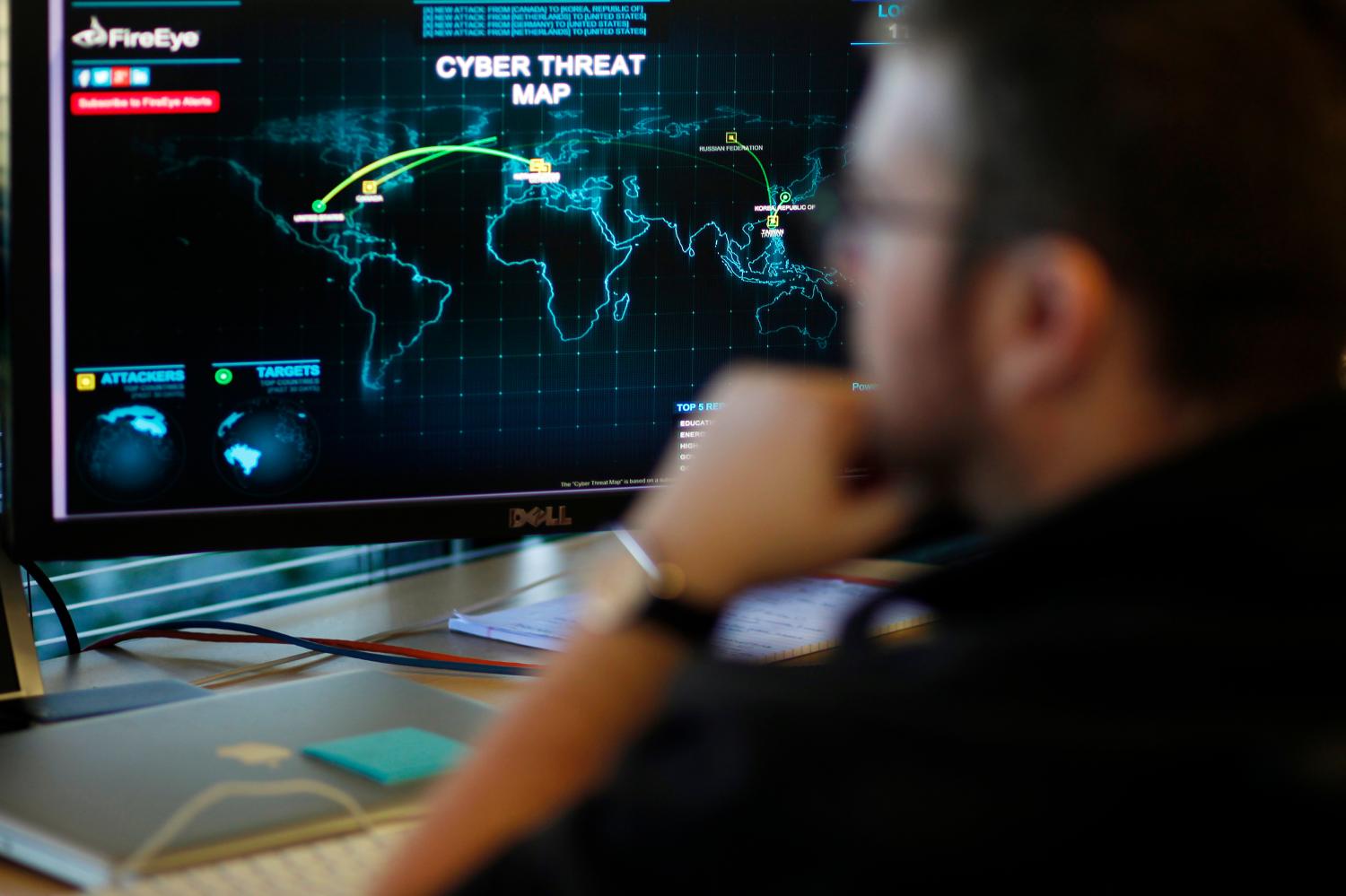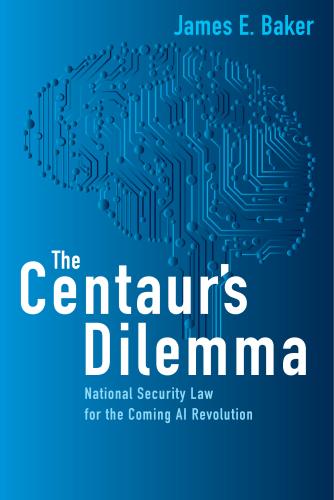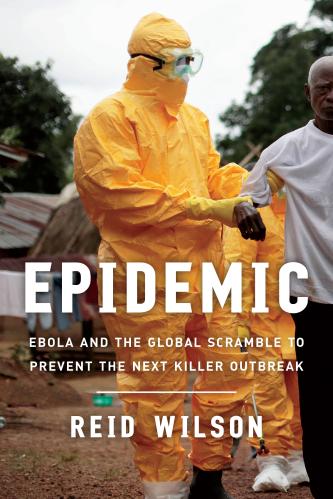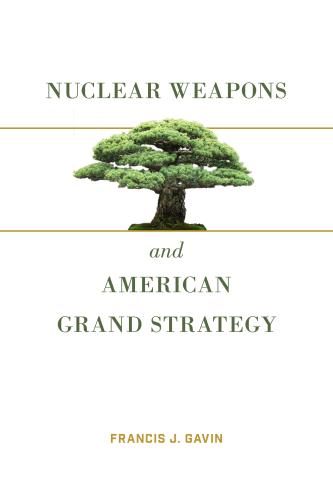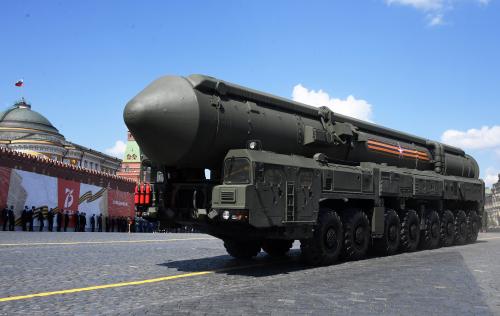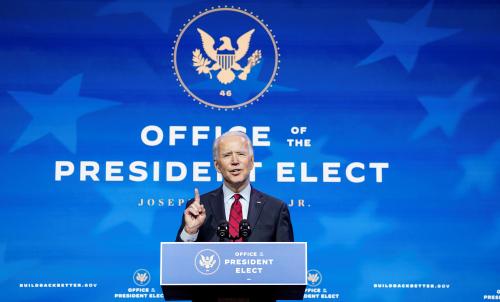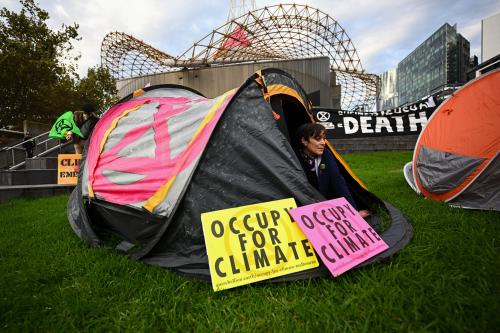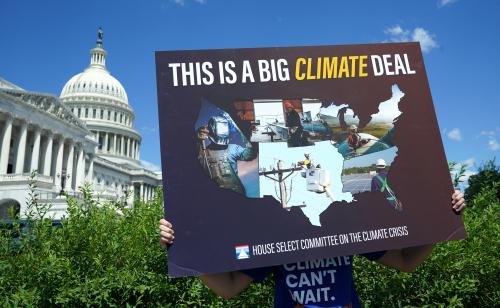This brief is part of the Brookings Blueprints for American Renewal & Prosperity project.
The U.S. Department of Defense and broader national security apparatus have for decades focused on a set of threats that former Chairman of the Joint Chiefs of Staff General Joseph Dunford called the “4+1”: Russia, China, North Korea, Iran, and the more diffuse threat of transnational violent extremism. In the 2018 National Defense Strategy, then-Secretary of Defense James Mattis modestly altered this framing into what some in the Pentagon nicknamed the “2+3,” to reflect the greater emphasis on China and Russia.
While the basic 4+1 framework remains conceptually valid — indeed, all these dangers remain serious — the Biden administration and next Congress should also understand, as the coronavirus pandemic experience underscores, that the domestic and international security environments continue to change. This paper proposes that the United States focus intently on a separate 4+1 list of dangers: biological weapons and pandemics, nuclear weapons, climate change, nefarious aspects of digital technologies, and America’s own weakening internal cohesion and strength. This last one is different from the others in that it chiefly concerns the United States itself, so it is the “plus one” on the 4+1 list. All should be prominent in a new Biden administration’s national security strategy, in its staffing of the government, and — working along with Congress — in its allocations of various types of national resources.
CHALLENGES AND LIMITATIONS OF PREVIOUS POLICIES
For half a decade, the U.S. Department of Defense and American national security policy have focused on a set of threats that former Chairman of the Joint Chiefs of Staff General Joseph Dunford called the “4+1”: Russia, China, North Korea, Iran, and the more diffuse threat of transnational violent extremism. Former Secretary of Defense James Mattis’s 2018 National Defense Strategy modestly altered this framing into what some in the Pentagon nicknamed the “2+3,” to reflect the greater emphasis on China and Russia. But the basic 4+1 framework remains conceptually valid, as all these dangers remain serious. Thus, as President Joe Biden and the 117th Congress get to work, they should all appreciate that existing U.S. national security policy and priorities have deep bipartisan roots and sound logical underpinnings. But they should also understand, as the coronavirus pandemic experience underscores, that the domestic and international security environments continue to change.
At this point in the 21st century, therefore, we must think about threats afresh. This paper proposes that the United States focus intently on a separate 4+1 list of dangers: biological weapons and pandemics, nuclear weapons, climate change, nefarious aspects of digital technologies, and America’s own weakening internal cohesion and strength. This last one is different from the others in that it chiefly concerns the United States itself, so it is the “plus one” on the 4+1 list. All should be prominent in a new Biden administration’s national security strategy, in its staffing of the government, and — working along with Congress — in its allocations of various types of national resources.
Foreign policy, in Richard Haass’ memorable phrase, does begin at home. It is in matters of domestic policy, COVID-19 recovery, and economic renewal that the greatest foreign policy imperatives lie.
The threats on this new 4+1 list, and especially the first four, share several characteristics. They are all transnational. They are all diffuse in one sense, yet very real, tangible, and potentially acute in another. All are linked to the current epoque in human history characterized by rapid improvements in technology, burgeoning human populations around the planet, urbanization and globalization. All could, especially when juxtaposed with those from the classic 4+1 list of real or possible U.S. adversaries, wreak huge damage. They are also often interwoven with each other. For example, cyberattacks could increase the risks of accidental or inadvertent nuclear war, and disinformation campaigns can further weaken democracies like the United States. It is important to ask what we could realistically do about each — and what each teaches us about the art of war in the modern age. This paper maps out the rough resource requirements that could be associated with taking this “new 4+1” as seriously as we have been taking the original 4+1 dangers of Russia, China, North Korea, Iran, and terrorism. Its most important theme is that foreign policy, in Richard Haass’ memorable phrase, does begin at home. It is in matters of domestic policy, COVID-19 recovery, and economic renewal that the greatest foreign policy imperatives lie.
POLICY RECOMMENDATIONS
Pandemics and biological weapons
The COVID-19 crisis may be only a harbinger of what could come in either naturally- or artificially-created pandemics. And, as we are all viscerally more inclined to believe now than before the coronavirus pandemic, the stakes are potentially enormous, even if the virus itself changed little about what epidemiologists already knew to be possible. The string of new viral diseases stretching back to the 1980s has been remarkable, and is probably not a fluke in light of the proximity and density of human and animal populations that characterize the modern world.
Biological weapons may become more dangerous too. Gene splicing has become much, much easier in modern times, thanks to the development of methods like CRISPR. Fortunately, it is still very difficult to engineer such dangerous pathogens, because it is hard to know the effects of any rearrangement of genes in advance.
That said, there is also no basis for complacency. Sheer trial-and-error methods are easier to pursue in an era of rapid and easy gene-splicing technologies. It is terrifying how many millions could plausibly be killed in this fashion — even old-fashioned anthrax can be extremely deadly if delivered efficiently. To discourage and deter the pursuit of new types of pathogens, John Steinbruner proposed collaborative oversight of biological research around the world as a type of societal verification. If geopolitics improves enough to make it feasible, the idea merits serious consideration.
Whatever the threat of biological weapons, the central lesson of 2020 is that natural pandemics are a top-tier threat to mankind. Indeed, they are so daunting that they should encourage us to put traditional geopolitics on the back burner and focus on the common and potentially catastrophic dangers of the 21st century, with a planet full of people and pathogens alike. Whether that proves possible or not, one thing is clear: The United States, like other countries, has not done enough to prepare. And this moment, when minds are concentrated, must not be lost.
In general, resourcing for preparations against biological pathogen dangers was fairly strong in the late 1990s and early 2000s. For example, the Strategic National Stockpile of medical equipment and supplies, dating back to 1998, was a worthy idea expanded by President George W. Bush after the 9/11 attacks. But it was not consistently taken seriously enough by the administrations and Congresses that ensued. To be sure, stockpiling the right types of basic supplies is a daunting challenge. Yet some elements of a stockpile are quite predictable.
The kind of preparations needed to mitigate a future pandemic are by now so frequently discussed that to the ear of a reader in 2021, they almost sound hackneyed. But to summarize:
- First, early detection as well as identification, isolation, and contact tracing for initial victims are far and away the most desirable ways to mitigate any pandemic. The goal is to contain and exterminate the virus before it can reach the broader population, at least long enough for a vaccine to be developed. This method requires ample test kits, the number being a function of how widely the virus has spread before widespread testing becomes available — indeed, Scott Gottlieb and his colleagues at the American Enterprise Institute estimated in late March 2020 that up to 750,000 tests a week would soon be needed in response to the novel coronavirus outbreak. It also requires strong public health institutions that can do the legwork associated with contact tracing and quarantining the infected and exposed. Febrile thermometers for screening individuals entering public buildings, aircraft, or trains are needed in abundance. Smartphone apps to help track movement and contacts are as well.
- Second, it is crucial to maintain adequate stocks of the basic protective and lifesaving supplies that were in such limited availability at the onset of the pandemic due to inadequate preparation by the Obama and Trump administrations in particular. These include N95 masks and ventilators, not only for first responders and health care workers but the population writ large, and adequate supplies not only to care for Americans but to help others abroad (on humanitarian grounds, and because there is no other way to eradicate a pandemic in the age of globalization). The number of necessary ventilators is a function of the nature of a given illness; for COVID-19, one estimate was that roughly twice as many ventilators would be needed nationwide as the nation initially possessed.
- Third, the nation needs the manufacturing capacity to ramp up production of key supplies quickly. In some situations, this may require peacetime subsidies to keep capacity ready. We need the ability to expedite production of tests, vaccines, and various anti-viral treatments that could mitigate the effects of illness on anyone who gets sick. And, in an emergency, the country should commit to production of promising treatments even before safety trials run their course, with the government incurring the financial risk associated with production of vaccines and medicines that may end up discarded rather than used. One-time costs in a crisis could range into the tens of billions of dollars. But compared with the stakes, and compared with the costs of other kinds of emergencies, this is not out of proportion to the magnitude of the threat by any means. The government has tools ranging from the Defense Production Act to simple subsidies to address this challenge. We also must build up public health infrastructure needed for surveillance of possible future disease outbreaks, isolation and treatment of affected populations, and sharing of information across regional and national lines. Much of this can be on-call for emergencies and may not all involve full-time employees. It might be juxtaposed with various concepts for national service. The effort must extend to other countries as well, and should be combined with general global efforts to improve health care and health infrastructure around the world.
We also need ongoing work to mitigate the risks of future outbreaks occurring. As Vanda Felbab-Brown explains in her paper in this series, that requires strong restrictions on the kind of live-wildlife markets in places like China that have contributed to these kinds of outbreaks, and better protection of the natural habitats for species that tend to foster and harbor dangerous diseases to better regulate and limit interactions between animals and humans. The World Health Organization also needs to be empowered with more authority and resources to deploy capable surveillance and treatment teams quickly and effectively to zones where future outbreaks may occur.
COVID-19 has been horrible. Its costs are measured in the trillions of dollars for the U.S. federal budget and economy alone, and in the tens of thousands of deaths in the United States alone — with global effects an order of magnitude or so greater. Alas, while the next pandemics will likely be less severe than the current one, they could also be much worse based on previous outbreaks of the late 1990s and early 2000s, with the potential for a tenfold greater death rate or more. At that point, we could reach a tipping point in the basic cohesion of society, its police forces, its medical infrastructure, and its military capabilities.
Nuclear weapons and nuclear proliferation
Nuclear weapons have been around for all of our adult lives, and the slowing pace of proliferation in the 21st century inured many to the dangers of a nuclear crisis. This is no cause for complacency, however. Proliferation can take on the character of a ripple effect once it gets started. Moreover, the spread of more and more advanced technologies around the world, to include 3-D printing and advanced machine tools, along with the digitization of information related to nuclear weapons production and its dissemination on the internet. Together this means that, as nonproliferation expert David Albright wrote back in 2010: “It’s simpler now to obtain the materials, equipment, and know-how to produce nuclear weapons than it was ten years ago, and could be simpler still ten years from now.”
Fortunately, it remains difficult and expensive to produce fissile materials for nuclear weapons. So, when trying to reduce the odds of nuclear terrorism, we should focus most on the safety of those materials that already exist around the world. Indeed, this assessment leads to a strong case for greater nuclear safety and security in general. It will need to be pursued across many fronts, often with slow progress, and sometimes with setbacks. In addition to working to address and at least partially defuse the specific dangers with Russia, China, North Korea, and Iran as discussed before (and as my colleague Bob Einhorn writes in another piece for this series), we need a nuclear security and safety agenda that includes:
- Continued arms control and weapons reductions with Russia (ultimately involving other nuclear powers too — though perhaps in a “rolling” fashion that does not ask them to do more than cap the size of their respective arsenals in the first instance, given their much smaller numbers of weapons);
- Reductions in nuclear alert levels where possible;
- Additional safeguards on nuclear-related technologies including at power plants and research reactors, not only in Russia and the United States, but also in countries with fewer resources and smaller geographic buffers from their potential adversaries. There has been considerable progress globally in this arena since the Cold War, but work remains to be done, and U.S. resource levels (measured only in the hundreds of millions of dollars) have slipped too much;
- Further relegation of nuclear weapons to a smaller role in national security and defense strategy, so that the basic logic of the Nuclear Non-Proliferation Treaty can be sustained, including the so-called “Additional Protocol” by which International Atomic Energy Agency inspections can now examine suspected sites rather than only declared facilities;
- Ongoing work on the cooperative threat reduction agenda that dates back to the Nunn-Lugar program of the early post-Cold War years;
- Recommitment to strengthening of export control regimes and careful monitoring of technologies covered by the Nuclear Suppliers Group (and often having legitimate civilian uses, making them dual-use goods). These include advanced valves and other vacuum technologies, detonators, neutron generators, high-speed cameras, flash x-ray equipment, and metals and other key components for centrifuges; and
- Extreme care in how we handle any expansion of nuclear energy around the world. While the case for zero-emissions dependable energy is appealing, as discussed further below, the dangers associated with careless pursuit of nuclear power are very serious.
Nuclear weapons may have helped prevent war between great powers for 75 years. But they greatly raise the stakes and risks in any war that does happen — and they certainly have not made such conflict impossible. Reducing the threat of nuclear war should be near the top of any U.S. grand strategy.
Climate
It is worth spelling out just why climate change is so threatening from a national security and therefore grand strategy perspective. The likely impacts of climate change are by now well known, even if their magnitude of remains uncertain in some cases. At home, Americans can expect stronger storms and hurricanes — with an estimated 40% of hurricanes now likely to register a Category 3 storm or above, compared to a 30% historical average — as well as the gradual transformation of New York City and Florida into archipelagos fortified at great cost against the seas. These effects will be costly; they can also damage military facilities and thereby degrade combat readiness. Abroad, many effects could lead to mass displacement of peoples or competition between potentially adversarial states for increasingly scarce resources. Civil wars can be exacerbated, too — some believe climate-related drought contributed to the outbreak of the Syrian civil war. Crops may be more difficult to grow in an increasingly parched American farm belt, much of the Middle East, and large parts of Africa. Farmland could be degraded or destroyed in places like South Asia from encroachment of the seas and salination of soils, displacing large populations. Human encroachment into remote rain forests could increase the risks of pandemic disease due to contact between humans and animals.
Hundreds of millions of people around the world are considered at serious risk of displacement in the coming decades. Sea levels are projected to rise between 0.3 meters to 1.2 meters by the end of the century, on top of the 0.2 meters of rise already observed over the last 140 years. As a result, the number of displaced people could easily exceed one billion by mid-century and approach two billion by the end of the century. Two-thirds of those most vulnerable to sea rise are in South Asia, Southeast Asia, or East Asia. Drought will also force movements of people.
These trends will cause displacement, and loss of farmland in many of the world’s most populous regions. They will do so, moreover, at a time when depletion of global fisheries can exacerbate any ensuing problems of malnutrition — an especially concerning situation given that three billion people depend in large measure on the oceans for food. Today’s fisheries, in broad terms, are roughly one-third healthy, and two-thirds depleted, with most of those that are depleted still being further weakened by overfishing.
Climate change is probably already exacerbating some conflicts, even if it is generally not the top driver or cause in most, a trend likely to continue and grow. For example, the uncertain peace between India and Pakistan could be jeopardized by a lack of water from Himalayan glaciers. South Asian and East Asian megacities could go underwater, or have their main drinking water sources infiltrated by sea water, in fairly rapid succession. China could assert its claims to the South China Sea even more aggressively given its needs for food. Even if better water-use methods are employed, drought could intensify in the broader Middle East, South Asia, and North Africa, while Egypt and Ethiopia could come to blows over sharing water in the Nile River. Based on current trends, some 40% of India’s population could lack dependable access to drinking water by 2030. Such conditions exacerbate the risks of civil conflict and perhaps even inter-state war (over assets like water flows in the broader Nile river basin, or in parts of the Levant, or the Ganges and Indus river systems in South Asia).
As fare as U.S. policy is concerned, carbon taxes must be part of the answer, I believe. These can take the form of either revenue-neutral taxes, meaning that they are rebated to citizens or part of a broader agenda of increasing revenue to deal with the nation’s various challenges. Other papers in this series tackle the climate issue more directly, so I will content myself here simply with sketching out the national security implications that are already starting to take place, and could continue.
Digital dangers
Over time, new dangers from the computer, information, and internet revolution could emerge. For example, regulation of artificial intelligence could be very important to ensuring human safety and survival down the road.
But for the immediate and near-term future, one familiar problem is of overriding importance: the vulnerability of many crucial computer systems to hacking and other cyberattacks. In national security terms, this is a problem not only for American and allied armed forces, but just as importantly for the national infrastructures on which they depend and to which they are responsible for helping defend.
The situation is potentially quite dire. A military and national infrastructure with key systems plugged into the internet, running on flawed software, and often employing a simple password system for user access rather than a two-factor authentication system is inherently vulnerable. This is precisely the situation the United States and most of its major allies face today. With ongoing U.S. vulnerability, in a future conflict, an enemy is likely to roll the dice and attempt large-scale cyberattacks — even if, in crossing such a threshold, it opens itself up to inevitable retaliation. Because the United States needs to deploy and operate forces far from its own shores to protect allies, and because it depends on high-technology advantages made possible by the interconnectedness of assets from space to air to the ground to the oceans and below, an enemy may calculate that attacking such infrastructure will be advantageous to its interests regardless of reprisals. And it may well be right.
That said, uncertainty abounds in the cyber domain. Even as software vulnerabilities are patched up, new ones can emerge. Much of the information about these weaknesses is both highly technical and highly classified, making it hard to assess net vulnerability of the armed forces as a whole. On balance, though, the overall situation today is worrisome. A Defense Science Board study in early 2017 asserted that virtually no major U.S. weapons system had cyber systems that could be confidently vouched for. There are good reasons to think we can get much better at cybersecurity with cyber methods that involve better defense and resilience, replacement of flawed software (like Windows XP) never really written to prioritize security, and counterattack options of various sorts. But we are not in great shape now. Resources for command, control, communications, and cyber modernization must be prioritized even as the military likely faces a period of flattening budgets in the years ahead.
It may not be prudent to allow a situation in which the Department of Homeland Security must protect all non-military government assets in the United States with the private sector left to protect itself. Greater Department of Defense involvement in protecting core national infrastructure like electricity grids — and, as a backup, moving towards a more distributed, redundant, and resilient electricity system in the United States — is an idea worth considering. That is true for U.S. allies as well; strong public-private partnerships may also often make sense. Robust protection of electoral infrastructure and machinery is crucial as well. So is a concerted national and multinational effort to counter disinformation.
The domestic underpinnings of national power and purpose
Americans supported a strong defense and engaged foreign policy after World War II because they remembered what happened when they were not engaged before that war. They also feared Communism. Support for engagement continued even after the Berlin Wall fell, because it was not that expensive at the time. But 30 years later, many Americans are wondering if the global security, trade, and manufacturing system that has developed over the years is actually good for them. As the election of Donald Trump with his anti-trade and anti-alliance message, proved in 2016, many are willing to fundamentally rethink the nation’s role in the world. If we do not listen to that message, the entire domestic basis for a strong America and engaged U.S. foreign policy leadership role in the world could evaporate.
As [Donald Trump’s election proved], many [Americans] are willing to fundamentally rethink the nation’s role in the world. If we do not listen to that message, the entire domestic basis for [an] engaged U.S. foreign policy leadership role in the world could evaporate.
Yet without a strong and engaged United States helping ensure global order, future prospects are not good for developing countries, either. We also need a concrete policy agenda for reviving the American dream. I do not purport here to have the capacity to provide either that new American story, at the level of poetry and vision, or the accompanying detailed policy agenda, at the level of prose and detailed analysis. And other papers in this Brookings Blueprint series address many of the specific aspects of American domestic renewal that will be needed if we are to sustain a strong and engaged foreign policy as a nation as well. But it is worth sketching out the scale of the challenge in a paper on grand strategy and national priorities. Brookings economist Bill Gale has done the math. He advocates adding a total of nearly 2% of GDP to investments in children, education, infrastructure, and non-defense research and development.
CONCLUSION
America’s traditional national security concerns remain serious. Russia, China, North Korea, Iran, and transnational violent extremism — what the Pentagon has called the “4+1” threat spectrum for the last half decade or so — have not become more benign as a result of the COVID-19 crisis or any other recent development on the international security landscape. The United States still needs a very strong military to deter conflict and preserve the peace with these nations and groups.
Yet the new threat spectrum proposed here is at least as compelling today. To the existing 4+1 list, we should add a second dimension of threats of a different nature but the same number: biological, nuclear, digital, climatic, and internal dangers. Addressing these threats seriously will require a shift in mentality, and perhaps some changes to U.S. government architecture. It will also take resources. From a foreign policy perspective, addressing these new 4+1 challenges is now more important than increasing the defense budget.
-
Acknowledgements and disclosures
Claire Harrison and Anna Newby edited this paper. The author thanks colleagues throughout the program who provided counsel and advice, as well as the Foreign Policy Communications team.

